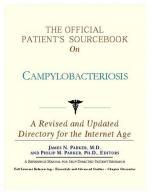|
This section contains 717 words (approx. 3 pages at 300 words per page) |

|
Campylobacteriosis is a bacterial infection of the intestinal tract of humans. The infection, which typically results in diarrhea, is caused by members of the genus Campylobacter. In particular, Campylobacter jejuni is the most commonly cause of bacterial diarrhea in the United States (and likely other countries as well), with more occurrences than salmonella (another prominent disease causing bacteria associated with food poisoning). Worldwide, approximately 5 to 14% of all diarrhea is thought to be the result of campylobacteriosis.
Humans contract campylobacteriosis by eating or drinking contaminated food or water. Less often, direct contact with infected people or animals can spread the infection. The infection begins from two to five days after the contaminated food or water has been ingested.
The illness caused by Campylobacter bacteria has been known for decades, and was recognized as a cause of disease in animals since 1909. However, it is only in the last two decades...
|
This section contains 717 words (approx. 3 pages at 300 words per page) |

|


